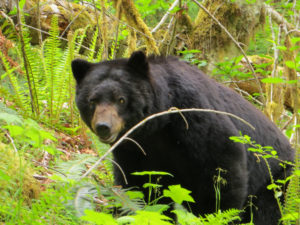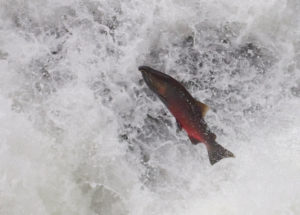On Land
Roosevelt elk. Olympic National Park is home to the largest unmanaged herd of Roosevelt elk in the Pacific Northwest. These majestic animals, named for President Theodore Roosevelt, are impressively adaptable and live in a range of habitats, from mountain meadows and forests down to lowland rain forests. You’ll get great views of Roosevelt elk in the Hoh Rain Forest and Quinault Rain Forest and around Dosewallips on Hood Canal. These non-migratory herds stick around throughout the year. Females and calves band together in herds of around 20, while the males are usually on their own or in pairs. If you visit in September during mating season, you’re likely to hear plenty of bugling from courting males. Be careful. These amazing creatures are to be admired from afar.
Olympic marmot. These super-social creatures are playful, gregarious and found only on the Olympic Peninsula. About the size of a well-fed housecat, these bushy-tailed rodents have a sharp, piercing whistle that warns friends and family of intruders or potential predators, and lets hikers know they’re in marmot territory. Marmots hibernate in September or early October so spring is the best time to see them. Hurricane Ridge is a prime viewing spot.
Blacktail deer. Pretty much anywhere you wander in Olympic National Park, you’re likely to lay your eyes on these graceful creatures. Blacktail deer are a subspecies of the mule deer, common throughout much of the West, and a close relation of the white-tailed deer found throughout the eastern and midwestern U.S. Looks can be deceiving. Black-tailed deer appear docile and tame, but don’t be tempted to approach one. These animals are wild, and their hooves are very sharp.

Black bears. This common Olympic National Park resident is smaller and darker than its grizzly and brown-bear cousins. (You won’t find those guys around here.) Black bears dine on a varied cuisine including tree sapwood, tree bark, insect mounds, berries and fish. It’s not unusual to spot one in early fall raiding mountain-side huckleberry bushes. During spring and fall salmon runs, bears have an easy time snagging dinner in shallow waters. Always keep your distance from black bears, mama bears with cubs are easily threatened. And be sure to always secure your food and other scented items while camping in the park. They have a nose for the good stuff.

